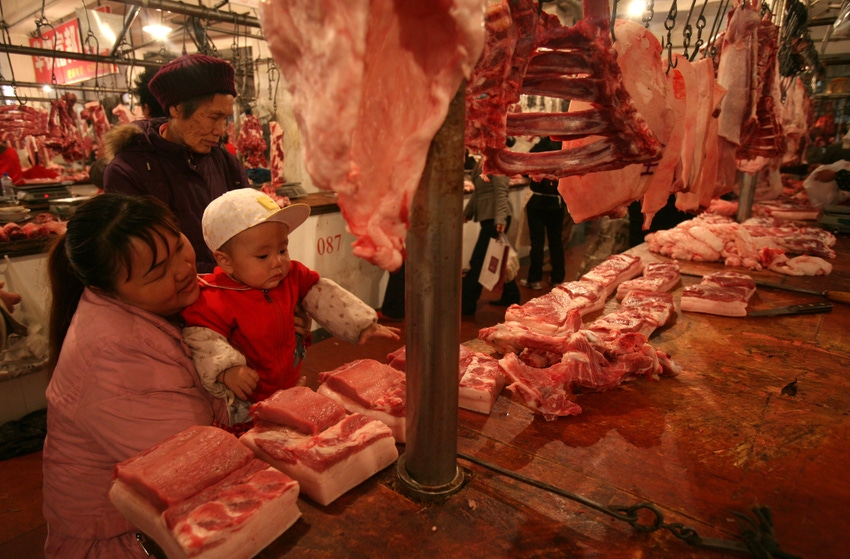November 6, 2019

United States pork producers challenged the National Pork Board's international marketing team to uncover insights that would help U.S. pork to grow in today's dynamic global market. Today the National Pork Board came through, releasing a report that digs into the growing short- and long-term protein needs facing China and how U.S. pork can position itself to meet that demand. Pork 2040: China Market Assessment also reveals the impact that African swine fever is having on China's protein needs and how the Chinese pork industry and supply chain will change as a result.
The research study was conducted by Gira, a global research firm, using Pork Checkoff dollars and funds from the USDA Foreign Agricultural Services Emerging Markets Program. It outlines critical insights that exporters of U.S. pork can use now to position themselves for long-term success in the Chinese market.
"Pork is a critical part of the Chinese diet with per capita consumption nearing 88 pounds (carcass weight equivalent) per person per year," says Norman Bessac, vice president of international marketing for the Checkoff. "This report will help exporters position U.S. pork as the supplier of choice, thereby building value for all U.S. pork producers."
According to the report, pork consumption in China peaked in 2014 and will continue to see a slow decline as the Chinese population grows to its highest level in 2030. As the availability of other proteins – specifically fish, chicken and beef – increases along with increased disposable income, consumers will look to diversify center-of-the-plate protein options.
According to the research, U.S. pork is poised to help fill the urgent short-term protein needs that ASF is creating in China due to the decrease in China's domestic pig population. However, by 2025 Chinese pork production will have rebounded, and farms will have had time to rebuild and become more modern. The report outlines key steps that pork exporters can take now to increase exports to China in the short-term and defines a strategy to meet long-term demands. A few highlights from the report include:
Short-term – With the current ASF outbreak, the U.S. export industry will need to work hard to capitalize on the potential market share it can garner. The demand in the short term will be for pork cuts, variety meats and carcasses. Exporters also should use the benefit of time to build loyalty with both Chinese processors and consumers.
Long-term – As 2025 approaches and Chinese domestic production rebounds, Chinese pork will replace most of the import growth seen during the ASF outbreak. However, U.S. exporters can use these next five years to build customer relationships, value around their products and to differentiate themselves as a preferred supplier in the long-term.
Minnesota pork producer and U.S. Meat Export Federation's Pork Committee chair Randy Spronk says he appreciates the commitment that the Pork Checkoff has in working with strategic partners to add value to the U.S. pork market as exports are an important piece of the marketing puzzle and this marketing research will help key decision makers define and develop these markets.
"What I did find interesting from this report is how it details how the African swine fever outbreak will accelerate the change and modernize the Chinese pork industry," Spronk says. "Since 2014 China's pork production structure has been changing as the Chinese government set out to improve food quality and safety in addition to reduce their environmental impact. Before the outbreak of ASF Chinese pork production was still heavily based on the backyard and semiformal breeding and processing systems that have driven production growth for the last 20 years. These farms have no hope of meeting new biosecurity rules that would be needed to contain the disease."
Spronk says it is more than likely pig production from these Chinese farms will be insignificant, as early as 2025.
"China will work aggressively to create more of the world's larger scale and most efficient pig supply chains in the near term. These pig farms will modernize and become larger, involving huge private investments and restocking of farms. Harvest facilities will move closer to where the pigs are raised and will primarily integrate with farms within 10 years," Spronk says. "China will strive to be more efficient and thus more competitive with the United States and the European Union and China pork will be positioned to compete with imports on price and quality."
Jack Shao, Hormel Foods international sales and marketing manager, says what he found most interesting from the report is how detailed it was in giving opportunities for U.S. pork to be competitive in the short and long term in the Chinese market.
"Short term the U.S. export industry will need to work hard to capitalize on the market share and use this period to build loyalty with processors, retailers and consumers. There won't be a large, initial surge of imports to China because of the current ASF outbreak, but the demand in the short term will be in loins, pork cuts and half carcasses," Shao says. "Long term importing pork will become a value-added activity to be carried out by the exporters who are as good as the Chinese that's producing as marketing and meeting the demands of customers. These will be the key things that exporters will need to keep in mind to be successful in the Chinese market."
The Pork Board has also created a free marketing toolkit, which includes ideas that U.S. pork exporters can use to build their business in China. The Pork Checkoff collaborated with the U.S. Meat Export Federation and the National Pork Producers Council on the Pork 2040 study.
Source: National Pork Board, which is solely responsible for the information provided, and wholly owns the information. Informa Business Media and all its subsidiaries are not responsible for any of the content contained in this information asset.
You May Also Like




